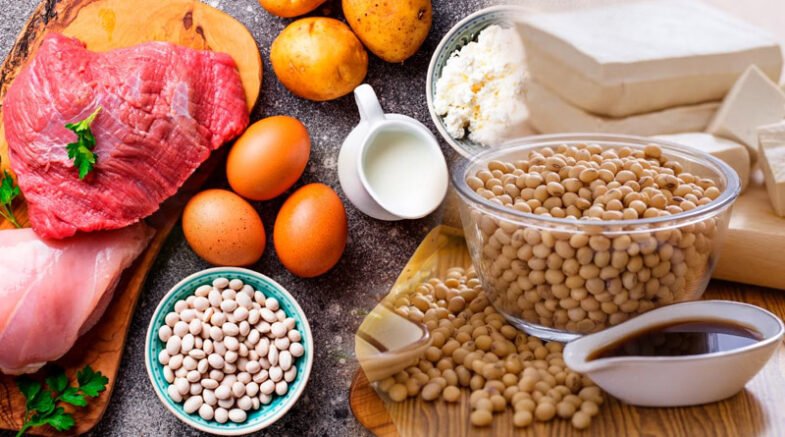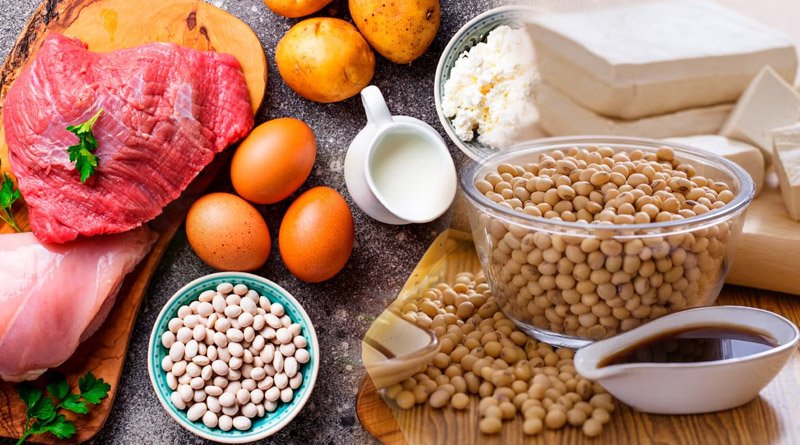The highest amount levels of exogenous amino acids were determined in the soybean grains regardless of the origin of the raw material.

Products made from soybeans are increasingly being used in the feed and food industries. Currently, India produced 9.3 million metric tonnes of soybeans, or nearly 4% of the entire global production, which totals 219.8 million metric tonnes.
Less than 10% of this produce is directly utilised for human consumption (Gandhi, 2006). Today’s assessments of soy products are based on a considerably wider range of tests, enabling a more precise assessment of the nutritional value of the various products.
The value of soybeans products will increase with advancements in technological adaptations of soybean products and a greater understanding of the impact on performance and health of relatively unknown chemicals, such as isoflavones.
The importance of accurate analysis of these novel chemicals will increase. At every point in the food and feed industry’s protein supply chain, soy products must undergo quality analysis.
Table 1. Classification of soybean quality factors (Hurburgh and Brumm, 2004)
| Classification | Example | Comment |
| Defects | Foreign material
• Damage • Splits • Heat damage • Toxic substances |
Defects reduce the value of grain
for all users. |
| • Moisture variation
• Insect infestation • Sour, heating |
Unstable grain quickly becomes
high in defects |
|
| Shipment and storage factors |
SOYBEAN GRADING:
Grading is the process of grouping grain and oil seeds based on variables or qualities that determine their grade. Inspection is the term for the grading procedure. In 1916, the first US grain grades and standards were created. The methods and tools used for official inspections are decided upon by the Federal Grain Inspection Service, a branch of the USDA.
According to the grain standards act, soybeans are defined as grain that contains 10% or less of other grains for which standards have been established and 50% or more of whole or broken soybeans that cannot pass through an 8/64-inch round hole sieve.
Yellow and mixed soybeans are the two different types of soybeans. Yellow or green seed coatings that are yellow or have a yellow tinge in cross section can be found on yellow soybeans.
Quality factors in the US soybean grades (FGIS, 2004)
| Factor | Description | Unit of measure |
| Moisture (MC) | Fraction of water on a
total weight basis |
Percent, wet basis |
| Test weight (TW) | Bulk density of whole
kernels. |
Pounds per bushel |
| Foreign material (FM) | Fraction of fine particles
and non grain material |
Percent, total weight
basis |
| Heat Damage (HDK) | Soybeans and pieces
of soybeans that are materially discolored and damaged by heat |
Percent, total weight
basis |
| Total damage (DKT) | Fraction of beans with
mold, insect or frost damage. |
Percent, total weight
basis. |
| Splits | Soybeans with more than
one fourth of the bean that is removed and not damaged |
Percent, total weight
basis |
| Musty, sour, heating | Presence of mold odors
or heating grain |
Yes or no judgment |
The investigation revealed no statistically significant variations between the amounts of specific amino acids in the protein of the soy drink and soy dessert manufactured from genetically modified soybean grains .The content of amino acids in the soy products analyzed was statistically significantly lower than that in the raw material.
According to Zaremba [2]and Hoffman et al. [3], the technological processes of manufacturing food from soybean grains cause the contents of individual components to decrease several times. Key et al. [4] and Craig [5] claim that adding nutrients to those soy products could prove practical to offset their nutritional value and make it comparable to the nutritional value of the animal protein-based products.
soy dessert made from GM soybean
| Amino Acids | Product | Product from Soybean Grain | Content (g/100 g)
(x) |
Sx (+/−) |
| Phenylalanine
Leucine |
Soy drink
Soy dessert Soy drink Soy dessert |
GM
GM |
0.151
0.157 0.228 0.234 |
0.001
0.009 0.001 0.004 |
| Isoleucine | Soy drink
Soy dessert |
GM | 0.207
0.145 |
0.136
0.002 |
| Methionine | Soy drink
Soy dessert |
GM | 0.040
0.042 |
0.002
0.002 |
| Valine | Soy drink
Soy dessert |
GM | 0.137
0.141 |
0.001
0.007 |
| Lisine | Soy drink
Soy dessert |
GM | 0.189
0.194 |
0.001
0.005 |
CONCLUSION :
High quality soybeans and soy based foods are generally preferred and the standards available will assist the producer and consumers in the selection of the best based on various physical and chemical characteristics and end-use.
These standards will be useful for all the people concerned with the soybean industry globally. Based on the research analyses performed, it was confirmed that, except for tryptophan, exogenous amino acids were present in the soybeans grain and in their products.
The highest amount levels of exogenous amino acids were determined in the soybean grains regardless of the origin of the raw material. This confirms that the nutritional value for amino acids does not change depending on the grain type.
